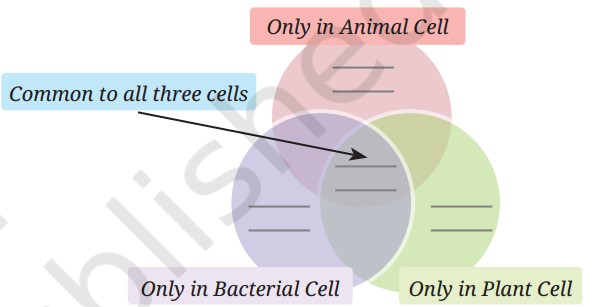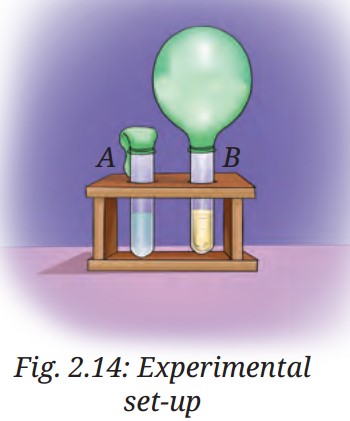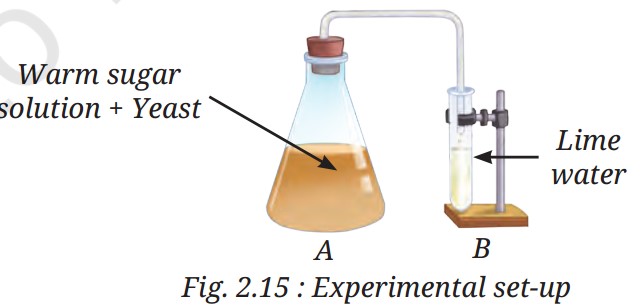Chapter 1- Exploring the Investigative World of Science
Q1. Why is one side of a puri thinner than the other?
Answer: When a puri is fried, steam forms inside and causes it to puff up. The steam pushes one side more than the other, depending on how it was placed in the oil and its thickness. This pressure causes one side to stretch and become thinner.
Q2. Are there more grains of sand on all the beaches and deserts of the world or more stars in our galaxy?
Answer: It’s a fascinating comparison! Scientists estimate that there are more stars in the galaxy than grains of sand on all the beaches, but it depends on the scale of measurement. This question shows how vast the universe is.
Q3. Why has nature created such a vast variety of plants and animals?
Answer: Nature’s diversity ensures survival. Different shapes, sizes, and characteristics help living things adapt to various environments, promoting balance and evolution in ecosystems.
Q4. Write one question that makes you curious about the world.
Answer (Sample): Why does the sky appear blue during the day but turns orange during sunset?
Comprehension and Discussion-Based Questions:
Q5. What does “Investigative World of Science” mean?
Answer: It means exploring science by asking questions, conducting simple experiments, and using observations to understand how the world works. It’s about becoming a young scientist — not just learning facts but discovering them.
Q6. What is meant by systematic investigation?
Answer: Systematic investigation means planning an experiment carefully — changing only one variable at a time, keeping notes, observing results, and using evidence to form explanations.
Q7. Why do puris puff up when fried?
Answer: When a puri is placed in hot oil, water inside the dough turns into steam, which expands and pushes the layers of dough apart, causing it to puff up like a balloon.
Q8. What factors can you change in a puri puffing experiment?
Answer:
- Thickness of the dough
- Type of flour used (atta, maida)
- Temperature of the oil
- Way of placing the puri in oil (vertical, slanted, etc.)
Q9. What can be measured or observed in the puri experiment?
Answer:
- Whether it puffs up or not (Yes/No)
- Time taken to puff (in seconds)
- Smell or smoke from oil
- Whether one side becomes thinner
- The effect of pricking holes in the dough
Critical Thinking Questions
Q10. Why is it important to change only one variable at a time in an experiment?
Answer: Changing only one variable at a time helps you understand which factor caused the result. If multiple things change together, you won’t know what actually made the difference.
Q11. What does the symbol of the root and the kite represent in this book?
Answer: The root symbolizes a strong foundation in real-world observations and knowledge, while the kite represents curiosity and imagination — the freedom to explore and ask big questions.
Q12. How is science connected to daily life, as explained in this chapter?
Answer: Science is present in everyday things like cooking, weather, health, electricity, and more. Simple questions about daily life (e.g., why dough rises, why puris puff, etc.) can lead to scientific investigation.
Chapter 2 — The Invisible Living World: Beyond Our Naked Eye
This chapter explores the microscopic world of microorganisms, introduces the cell as the basic unit of life, discusses types of microorganisms, and shows how microbes impact health, environment, and food.
Important Questions and Answers (with Activities)
1. What is a cell? Why is it called the basic unit of life?
Answer: A cell is the smallest structural and functional unit of a living organism. All living beings are made of cells. It is called the basic unit of life because it performs all vital functions necessary for life like nutrition, growth, respiration, and reproduction.
2. How was the cell discovered?
Answer: In 1665, Robert Hooke used a microscope to observe a slice of cork and saw tiny, box-like structures which he called cells. Later, Antonie van Leeuwenhoek observed living microorganisms using a better microscope and is known as the Father of Microbiology.
3. What are the main parts of a cell?
Answer:
- Cell membrane – Outer layer that controls material flow.
- Cytoplasm – Jelly-like substance where life processes occur.
- Nucleus – Controls all cell activities and contains genetic material.
- Cell wall (plants only) – Provides shape and support.
- Chloroplasts (plants only) – Help in photosynthesis.
- Vacuole – Stores nutrients and wastes.
4. What are microorganisms?
Answer:
Microorganisms (or microbes) are tiny living beings that are too small to be seen with the naked eye. They may be unicellular or multicellular and live in air, soil, water, and even inside our bodies.
Examples:
- Protozoa: Amoeba, Paramecium
- Fungi: Yeast, Mould
- Bacteria: Lactobacillus
- Algae: Chlorella, Spirulina
5. What are the roles of microorganisms?
Answer: Beneficial Roles:
- Decompose waste into manure (Activity 2.7)
- Nitrogen fixation (Rhizobium in legumes)
- Fermentation (yeast for bread, Lactobacillus for curd)
- Produce biogas (methane)
- Generate oxygen (algae like Spirulina)
End-of-Chapter Exercises: Keep the Curiosity Alive
- Question 1:
- Various parts of a cell are given below. Write them in the appropriate places in the following diagram.
- Common to all three cells: Nucleus, Cytoplasm, Cell membrane
- Only in Plant Cell: Chloroplast, Cell wall
- Only in Bacterial Cell: Nucleoid

- Answer:
- Common to all (plant, animal, bacterial cells):
- Nucleus: Present in plant and animal cells, regulates cell activities.
- Cytoplasm: Present in all, site of life processes.
- Cell membrane: Present in all, encloses cell contents and regulates material exchange.
- Only in Plant Cell:
- Chloroplast: Contains chlorophyll for photosynthesis.
- Cell wall: Provides rigidity and strength.
- Only in Bacterial Cell:
- Nucleoid: Region containing genetic material, not enclosed by a membrane.
- Question 2:
- Ananddi took two test tubes and marked them A and B. She put two spoonfuls of sugar solution in each of the test tubes. In test tube B, she added a spoonful of yeast. Then she attached two incompletely inflated balloons to the mouth of each test tube. She kept the set-up in a warm place, away from sunlight.
- (i) What do you predict will happen after 3–4 days? She observed that the balloon attached to test tube B was inflated. What can be a possible explanation for this?
- (a) Water evaporated in test tube B and filled the balloon with water vapor.
- (b) The warm atmosphere expanded the air inside test tube B, which inflated the balloon.
- (c) Yeast produced a gas inside test tube B which inflated the balloon.
- (d) Sugar reacted with warm air, which produced gas, eventually inflating the balloon.
- (ii) She took another test tube, ¼ filled with lime water. She removed the balloon from test tube B in such a manner that the gas inside the balloon did not escape. She attached the balloon to the test tube with lime water and shook it well. What do you think she wants to find out?

- (i) What do you predict will happen after 3–4 days? She observed that the balloon attached to test tube B was inflated. What can be a possible explanation for this?
- Answer:
- (i) Prediction and Explanation:
- Prediction After 3–4 days, the balloon on test tube B inflates, while test tube A’s balloon does not.
- Correct Option: (c) Yeast produced a gas (carbon dioxide) inside test tube B, which inflated the balloon. (Yeast ferments sugar, producing carbon dioxide that fills the balloon.)
- (ii) Lime Water Test: She wants to confirm that the gas produced by yeast is carbon dioxide. When carbon dioxide is passed through lime water (calcium hydroxide solution), it turns milky due to the formation of calcium carbonate, identifying the gas.
- Figure: Fig 1.1 (Page 18) shows the experimental setup with balloons attached to test tubes.
- (i) Prediction and Explanation:
- Ananddi took two test tubes and marked them A and B. She put two spoonfuls of sugar solution in each of the test tubes. In test tube B, she added a spoonful of yeast. Then she attached two incompletely inflated balloons to the mouth of each test tube. She kept the set-up in a warm place, away from sunlight.
- Question 3:
- A farmer was planting wheat crops in his field. He added nitrogen-rich fertiliser to the soil to get a good yield of crops. In the neighbouring field, another farmer was growing bean crops, but she preferred not to add nitrogen fertiliser to get healthy crops. Can you think of the reasons?
- Answer:
- The bean farmer did not need nitrogen fertilizer because bean crops (legumes) have root nodules containing Rhizobium bacteria (Fig 2.12), which fix nitrogen from the air into compounds the plants can use, naturally enriching the soil.
- Question 4:
- Shehald dug two pits, A and B, in her garden. In pit A, she put fruit and vegetable peels and mixed it with dried leaves. In pit B, she dumped the same kind of waste without mixing it with dried leaves. She covered both pits with soil and observed after 3 weeks. What is she trying to test?
- Answer:
- Shehald is testing the effect of mixing dried leaves with fruit and vegetable peels on decomposition. Pit A, with mixed organic matter, likely decomposes faster and produces better manure due to a balanced carbon-nitrogen ratio, which supports microbial activity. Pit B, with only peels, may decompose slower due to excess moisture and nitrogen.
- Question 5:
- Identify the following microorganisms:
- (i) I live in every kind of environment and inside your gut.
- (ii) I make bread and cakes soft and fluffy.
- (iii) I live in the roots of pulse crops and provide nutrients for their growth.
- Answer:
- (i) Bacteria: They are ubiquitous, found in various environments, including the human gut, where they aid digestion.
- (ii) Yeast: A fungus that ferments sugar, producing carbon dioxide to make dough rise (Activity 2.8).
- (iii) Rhizobium: Bacteria in root nodules of legumes that fix nitrogen for plant growth (Fig 2.12).
- Identify the following microorganisms:
- Question 6:
- Devise an experiment to test that microorganisms need optimal temperature, air, and moisture for their growth.
- Answer:
- Experiment:
- Take four petri dishes with nutrient agar.
- Inoculate each with a small amount of yeast or bacteria.
- Place dish 1 in a warm incubator (30°C) with moisture and air access.
- Place dish 2 in a refrigerator (4°C) with moisture and air.
- Place dish 3 in an anaerobic jar (no air) at 30°C with moisture.
- Place dish 4 in a dry environment at 30°C with air but no moisture.
- Observe growth after 2–3 days.
- Expected Results: Dish 1 shows maximum growth (optimal conditions). Dish 2 shows little/no growth (low temperature). Dish 3 shows minimal growth for aerobic microbes (no air). Dish 4 shows no growth (no moisture).
- Experiment:
- Question 7:
- Take 2 slices of bread. Place one slice in a plate near the sink. Place the other slice in the refrigerator. Compare after three days. Note your observations. Give reasons for your observations.
- Answer:
- Observations: The bread near the sink develops mold (powdery/cotton-like growth, Fig 2.9) due to warm, moist conditions favorable for fungal growth. The refrigerated bread shows little/no mold due to low temperature inhibiting microbial growth.
- Reasons: Microorganisms like fungi thrive in warm, humid environments (sink area) but are inhibited by cold temperatures (refrigerator).
- Question 8:
- A student observed that when curd is left out for a day, it becomes more sour. What can be two possible explanations for this observation?
- Answer:
- Explanation 1: Lactobacillus bacteria continue to ferment lactose in the curd, producing more lactic acid, which increases sourness.
- Explanation 2: Other bacteria or fungi from the environment may contaminate the curd, contributing to additional fermentation or spoilage, enhancing the sour taste.
- Question 9:
- Observe the set-up given in Fig. 2.15 and answer the following questions.
- (i) What happens to the sugar solution in flask A?
- (ii) What do you observe in test tube B after four hours? Why do you think this happened?
- (iii) What would happen if yeast was not added in flask A?

- Answer:
- (i): The sugar solution in flask A ferments due to yeast, producing carbon dioxide and alcohol.
- (ii): Test tube B (likely containing lime water connected to flask A) turns milky after four hours because yeast produces carbon dioxide, which reacts with lime water to form calcium carbonate.
- (iii): Without yeast, no fermentation occurs in flask A, so no carbon dioxide is produced, and test tube B remains clear.
- Figure: Fig 2.15 shows an experimental setup (not fully described but likely similar to Fig 1.1, with a flask and connected test tube for gas collection).
- Observe the set-up given in Fig. 2.15 and answer the following questions.
